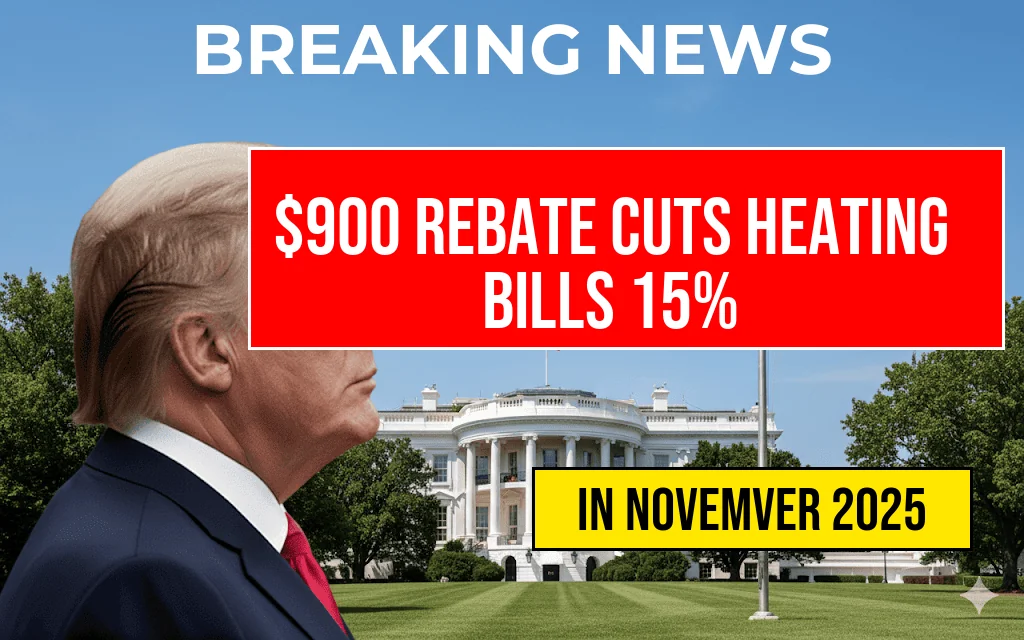What Does the $900 Winter Rebate Mean for Your Heating Bills?
As winter approaches, many are left wondering how to manage rising heating costs. Are you feeling the weight of high utility bills? The recently approved $900 winter refund is set to alleviate some of that financial strain, promising a 15% reduction in heating bills. This initiative comes at a pivotal time, with households grappling with inflation and increased energy costs this season.
Details of the Winter Rebate Program
The utility bill aid program was unveiled following extensive discussions among lawmakers, driven by the urgency to support families facing escalating energy expenses. Beginning in December 2023, eligible households can expect to receive this refund automatically, a move aimed at simplifying access to financial relief. The energy rebate program is structured to benefit low- to middle-income families, providing tangible assistance during a crucial time of year.
This rebate is part of the broader Household Refund Act, which seeks to inject financial support directly into the pockets of those who need it most. As a result, many can anticipate some immediate relief from the burdensome costs of heating their homes during the chilling months ahead.
Understanding the Impact of the $900 Refund
What could a 15% reduction in heating bills really look like? Consider the following table that outlines potential savings based on average household energy expenses:
| Average Monthly Heating Cost | Estimated Savings with 15% Reduction |
| $100 | $15 |
| $150 | $22.50 |
| $200 | $30 |
| $300 | $45 |
For a family that typically spends around $200 monthly on their heating, this translates into an annual savings of about $360. It’s significant — especially for families aiming to navigate tighter budgets due to rising costs across various sectors, including groceries and transportation.
Broader Implications for Energy Consumers
The rollout of this power rebate rollout comes amidst ongoing discussions about the importance of sustainable energy practices and the need for federal aid energy initiatives. As many households continue to struggle with the cost of living credit, such programs represent a crucial investment in community resilience.
Moreover, climate-conscious energy policies are gaining traction, with residents encouraged to consider long-term investments in energy-efficient solutions, from better insulation to smart thermostats. While the immediate relief is appreciated, understanding the overall context of energy usage could pivot communities toward a more sustainable future.
Conclusion: A Step Towards Relief
Through the home heating benefit and the accompanying $900 winter refund, families across the country will find an opportunity for much-needed financial relief this heating season. However, for many, this rebate is just one part of a larger puzzle involving energy consumption and sustainability. Questions regarding the implementation, eligibility criteria, and distribution logistics remain as the energy bill reduction begins to take shape in communities.
Engaging with programs designed for utility bill aid is essential, but the journey doesn’t end there. For continuous updates and potential enhancements to the program, one might explore resources such as [Forbes](https://www.forbes.com), [Reuters](https://www.reuters.com), and [Wikipedia](https://en.wikipedia.org/wiki/Energy_policy). As winter looms, take comfort in knowing that help is on the way as you prepare to face the colder months ahead.
Frequently Asked Questions
What is the $900 Winter Rebate?
The $900 Winter Rebate is a financial incentive approved to help households reduce their winter heating costs.
How much will heating bills be reduced?
The rebate is expected to lead to a 15% reduction in heating bills for eligible households during the winter months.
Who is eligible for the rebate?
Eligibility for the $900 Winter Rebate typically includes low to moderate-income households, but specific criteria may vary by region.
How can I apply for the rebate?
Applications for the $900 Winter Rebate can usually be submitted online or through local government offices; check your state’s energy program for details.
When can I expect to see the rebate on my bills?
Eligible households should start seeing the 15% reduction in their heating bills shortly after the rebate is processed, typically within the winter season.

Trevlin is a seasoned journalist with over a decade of experience in investigative reporting and feature writing. Known for his meticulous attention to detail and unwavering commitment to uncovering the truth, Trevlin has contributed to several prominent publications, where he has covered a wide range of topics, from social justice issues to environmental challenges. His work has not only informed the public but has also sparked important conversations and inspired action within communities. Trevlin’s passion for storytelling is evident in the way he weaves complex narratives with clarity, making even the most intricate subjects accessible to readers.
With an insatiable curiosity, Trevlin continuously seeks out untold stories and hidden perspectives, believing that every individual has a unique voice worth sharing. He prides himself on maintaining the highest standards of professionalism, always approaching his work with integrity and respect for his sources. Trevlin is not just a journalist; he is a dedicated advocate for truth and transparency in media. His work has earned him numerous accolades, solidifying his reputation as a credible and reliable author in the ever-evolving landscape of journalism.
